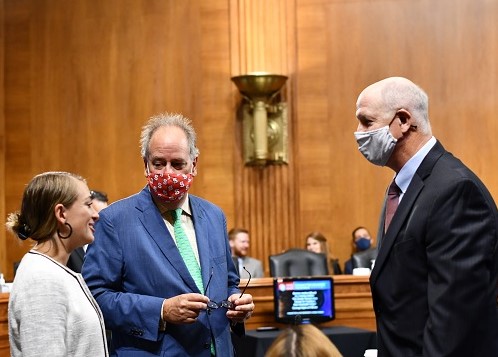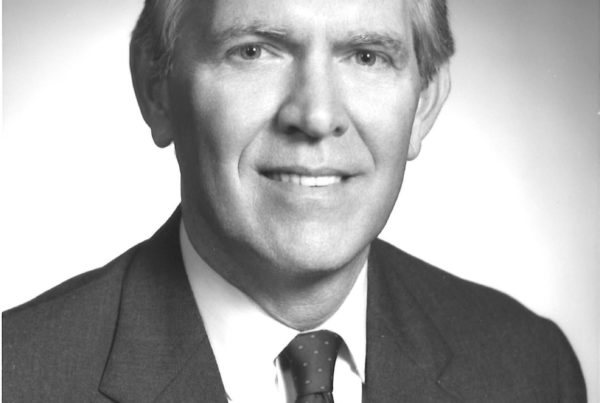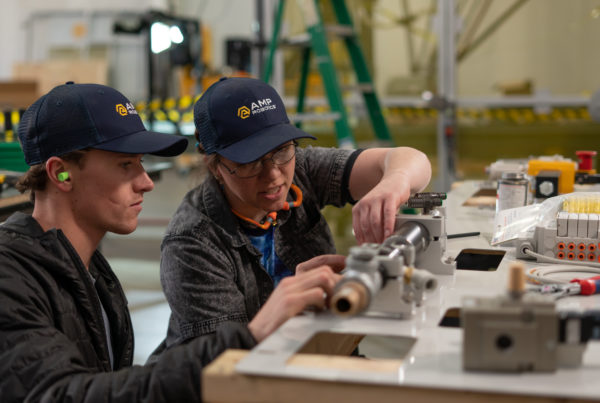ISRI Chief Lobbyist Billy Johnson’s Testimony Before the Senate Committee on Environment and Public Works
This week’s Industry Voices is ISRI Chief Lobbyist Billy Johnson’s testimony before the Senate Committee on Environment and Public Works (EPW) as part of the hearing “The Circular Economy as a Concept for Creating a More Sustainable Future.”
Recycling is an essential solution to supply our domestic and global manufacturing supply chains with sustainable raw material feedstocks that help combat climate change, conserve our natural resources, save energy, and employ hundreds of thousands of American workers. The recycling industry directly employs more than 164,000 Americans while generating over $110 billion in economic activity. These numbers tell the story of a strong U.S. recycling industry, but not one without challenges in key segments. To understand those challenges, it is important to first understand what makes for successful recycling.
Successful recycling requires market demand. If there is no end-market to utilize the recyclable materials that are collected, they will not be recycled and used again in manufacturing, regardless of the volume of material collected. And collection without market consumption is not recycling. Successful recycling also requires minimal contamination. Recyclables are products sold by specification grade, with their corresponding value and marketability directly related to quality.

Recycling in the U.S. involves far more than what is placed in the blue bin or cart at the end of the driveway. The recycling infrastructure in the U.S. touches almost every part of our economy, from retail stores to military bases. Most of the recyclable material that flows through the recycling infrastructure does so without any problems, and is transformed by recyclers into clean, high-quality, commodity-grade products used throughout the world as a substitute for virgin materials.
What makes the residential stream so unique is that while it is subject to the same demand-driven end-market, it is saddled with an ever-changing mix of materials on the supply side. That material flows into the stream whether there is a market for it or not. This sets the residential recycling infrastructure apart from commercial and industrial recycling in the U.S., which is why it demands a unique approach.
The visibility of the challenges being experienced in the residential recycling infrastructure has resulted in the general public losing confidence in the act of recycling. This is of great concern to all of us in the recycling and manufacturing industries.
Recycling works, but it is not without challenges. In any given year, our country’s recycling infrastructure processes more than 130 million tons of recyclables. However, residential recycling represents only 20% of the material that works its way through that infrastructure. The other 80% comes from the recycling of commercial and industrial materials that tend to be cleaner.
There is no one, singular solution to the challenges we are experiencing in the residential recycling infrastructure. The residential recycling chain and associated infrastructure in the U.S. is a complex system driven by market demand but saddled with a supply chain that is generally not linked to current market conditions.
There are four major pressure points that ISRI sees in the current residential recycling infrastructure. The first pressure point occurs before the material enters the stream, with the consumer deciding what to put in the bin. It’s at this point where providing better education to the public about what is and is not recyclable would be most valuable.
The second pressure point is when the material makes its way from the municipality to the materials recovery facility (MRF). At this point, there’s a need for contracting policies and procedures that provide flexibility for market fluctuations.
The third pressure point is when the material is processed. At this point, there is an increased need for additional upgrading of equipment and facilities despite investments that have already been made. The fourth and final pressure point is when the recyclables enter the end-market. This is where market development is needed.
At ISRI, we believe that all stakeholders must come together to develop a common understanding of the weaknesses affecting the residential stream. We must then work together to develop the menu of solutions that need to be put in place.










